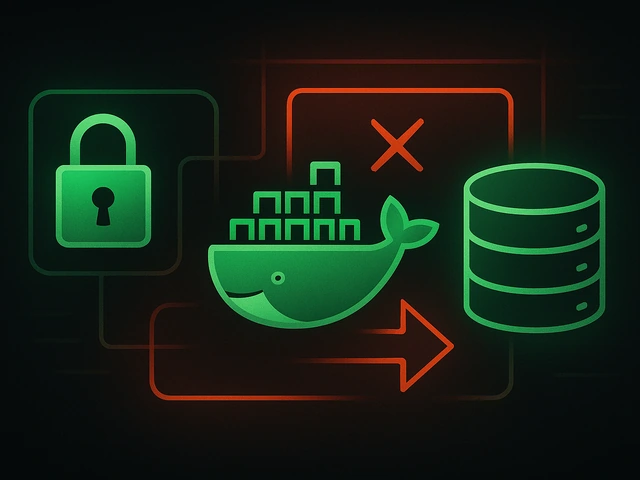
In the previous article, we considered several of the most popular operating systems that are usually chosen for installation on VPS servers. And today we want ...
3v-Hosting Blog
9 min read
The Kanban framework is a widely adopted methodology in project management and software development, designed to optimize the workflow, enhance productivity, and maintain a smooth, continuous delivery process. Originating from the manufacturing sector, Kanban has evolved into a versatile system that suits various industries, including IT, development, administration, and hosting. Its simplicity, flexibility, and visual nature make it a valuable tool for teams aiming to improve operational efficiency.
Kanban was first developed in the late 1940s by Taiichi Ohno, an industrial engineer at Toyota. Initially conceived as part of Toyota’s lean manufacturing system, the Kanban methodology aimed to control inventory levels and increase efficiency in production processes. Kanban, a Japanese word meaning “signboard” or “visual card,” was used to signal steps in the manufacturing process, ensuring that materials and products moved through the system at the right time, reducing bottlenecks and minimizing waste.
This visual management system proved highly effective and has since been adapted to various industries outside manufacturing, particularly in software development and IT operations, where managing workflows and optimizing efficiency is critical.
At the heart of Kanban are six core principles that guide its implementation and define its philosophy. These principles emphasize continuous improvement, flexibility, and efficiency.
Start with What You Do Now
Kanban encourages teams to begin with their existing workflow. There is no need to overhaul the entire process immediately. Instead, the framework aims to introduce incremental changes to improve current workflows.
Agree to Pursue Incremental Changes
Kanban is not about radical transformations; it’s about making continuous, small improvements. Teams are encouraged to identify bottlenecks, inefficiencies, or issues in their processes and gradually improve them.
Respect Current Roles, Responsibilities, and Titles
Unlike some other project management frameworks, Kanban doesn’t mandate specific roles or titles. Teams can continue working within their existing structure while gradually adopting Kanban practices.
Encourage Leadership at All Levels
Kanban promotes a decentralized leadership model where improvements and innovations can come from any team member, regardless of their position. Encouraging ownership of tasks and fostering leadership at all levels is a key aspect of Kanban.
Focus on the Flow
One of Kanban’s primary objectives is to ensure a smooth, continuous workflow. Identifying and eliminating bottlenecks is crucial to maintaining a consistent flow of tasks through the system.
Continuous Improvement
Kanban is fundamentally an iterative process that focuses on constant evolution and optimization. Through regular review and analysis, teams are encouraged to reflect on their processes and identify opportunities for refinement.
At its core, the Kanban framework revolves around a few simple yet powerful elements that provide structure and clarity to workflows. These elements make Kanban both accessible and effective for managing complex processes in any field.
The Kanban board is the primary visual tool used in the framework. It’s a dynamic, flexible board that visualizes the flow of tasks and projects through different stages of development. The board typically consists of columns that represent different phases of a project (e.g., To Do, In Progress, Done). The visual representation helps teams identify bottlenecks, track progress, and understand task dependencies.
Tasks are represented by cards that move from one column to another as work progresses. This visualization ensures that everyone on the team has a clear overview of the workflow and can easily identify where any issues may arise.
Work In Progress (WIP) limits are another essential component of Kanban. These limits restrict the number of tasks that can be actively worked on at any given time. By limiting the amount of work in progress, teams can avoid overburdening themselves, which often leads to inefficiencies and lower quality.
For example, if the WIP limit for the “In Progress” column is set to three, the team can only work on three tasks simultaneously. This encourages team members to finish tasks before starting new ones, preventing task overload and promoting better focus.
Each task is represented by a Kanban card, which contains important details such as task description, deadlines, and assigned team members. These cards are placed on the board and move through different stages (or columns) based on the task's progress. The cards serve as a visual representation of tasks and help team members keep track of what’s being worked on and what remains to be done.
In the realm of software development, Kanban has found widespread use due to its flexibility and emphasis on continuous delivery. Its ability to visualize work, manage flow, and limit work in progress aligns well with the iterative nature of software projects.
One of the key advantages of Kanban in software development is its focus on continuous delivery. Unlike other project management methodologies like Scrum, which divides work into fixed-length iterations (sprints), Kanban promotes a continuous workflow. Developers can push code to production as soon as it’s ready, without waiting for the end of a sprint. This allows for a more flexible release schedule and faster delivery of updates to end-users.
Kanban is also highly compatible with DevOps practices, where collaboration between development and operations teams is essential for maintaining a smooth deployment pipeline. The visual nature of the Kanban board helps track tasks related to both development and operations, ensuring that issues like system maintenance, code deployment, and monitoring are all handled efficiently.
In DevOps, WIP limits are particularly useful in preventing operational teams from being overwhelmed by too many simultaneous tasks, which could lead to errors and service downtime. By enforcing WIP limits, DevOps teams can ensure a more stable and predictable workflow.
Kanban offers numerous benefits that make it an attractive choice for project management in various fields, especially in environments that require flexibility and adaptability.
Visual Clarity: The Kanban board provides a clear, real-time view of the entire project. It helps teams identify bottlenecks, track progress, and manage workloads more effectively.
Flexibility: Unlike rigid frameworks, Kanban is highly adaptable and can be implemented in different workflows and industries. Teams can easily adjust their boards, WIP limits, and processes as needed without overhauling the entire system.
Improved Efficiency: By limiting the amount of work in progress, Kanban promotes task completion and prevents multitasking, which often reduces productivity. This leads to a more efficient workflow with fewer bottlenecks and faster delivery times.
Enhanced Collaboration: Kanban fosters a collaborative environment where team members can see what others are working on and identify where their help is needed. This transparency encourages communication and teamwork.
Continuous Improvement: The iterative nature of Kanban encourages teams to regularly review their workflows, identify inefficiencies, and implement small, incremental changes to improve processes over time.
While Kanban has many advantages, there are some challenges to consider when implementing it in a team environment.
Requires Discipline: Teams must adhere to WIP limits and be disciplined about moving tasks through the board. It can be tempting to take on too many tasks at once, but doing so defeats the purpose of Kanban.
Limited Guidance: Unlike more structured methodologies like Scrum, Kanban offers little in the way of predefined roles, processes, or guidelines. This lack of structure can be challenging for teams new to project management or those that require more guidance.
Potential for Task Overload: Without proper WIP limits and oversight, it’s easy for teams to overload themselves with tasks. This can result in bottlenecks and reduced productivity, negating the benefits of Kanban.
Kanban and Scrum are two of the most popular Agile methodologies, and while they share some similarities, they are distinct in many ways.
Workflow vs. Sprints: Scrum organizes work into fixed-length sprints, while Kanban is based on a continuous flow of tasks. In Kanban, tasks are completed as soon as they’re ready, whereas Scrum waits until the end of a sprint to deliver a product increment.
Roles and Structure: Scrum includes specific roles (e.g., Scrum Master, Product Owner) and ceremonies (e.g., Sprint Planning, Daily Standup), while Kanban is more flexible and doesn’t prescribe any roles or meetings. This makes Kanban less formal but also less structured.
Change Management: In Scrum, changes to the backlog are typically avoided during a sprint. In contrast, Kanban allows for continuous changes to the workflow as tasks move through the system.
The Kanban framework is a versatile and highly effective project management methodology that emphasizes visualizing workflows, improving efficiency, and fostering collaboration. Its flexibility makes it suitable for various industries, particularly those that require continuous delivery and adaptable processes, such as software development and IT operations.
Kanban’s focus on incremental improvements, work in progress limits, and flow management make it a valuable tool for teams looking to optimize their productivity without the rigidity of more structured methodologies like Scrum. While it requires discipline and may lack the guidance of other frameworks, Kanban’s benefits often outweigh its challenges, particularly for teams that thrive on adaptability and continuous improvement.

Learn how IP addresses work: IPv4 vs IPv6, public and private IPs, DNS resolution, routing, security basics, and how IPs are used in real server and cloud infra...

Accelerating WordPress at the Nginx level: correct PHP-FPM settings, try_files, static files, caching, Brotli, wp-login protection, and secure headers for stabl...

Effective backup strategies for Docker applications: how to protect volumes, data, and configurations while avoiding common mistakes, and quickly restore servic...